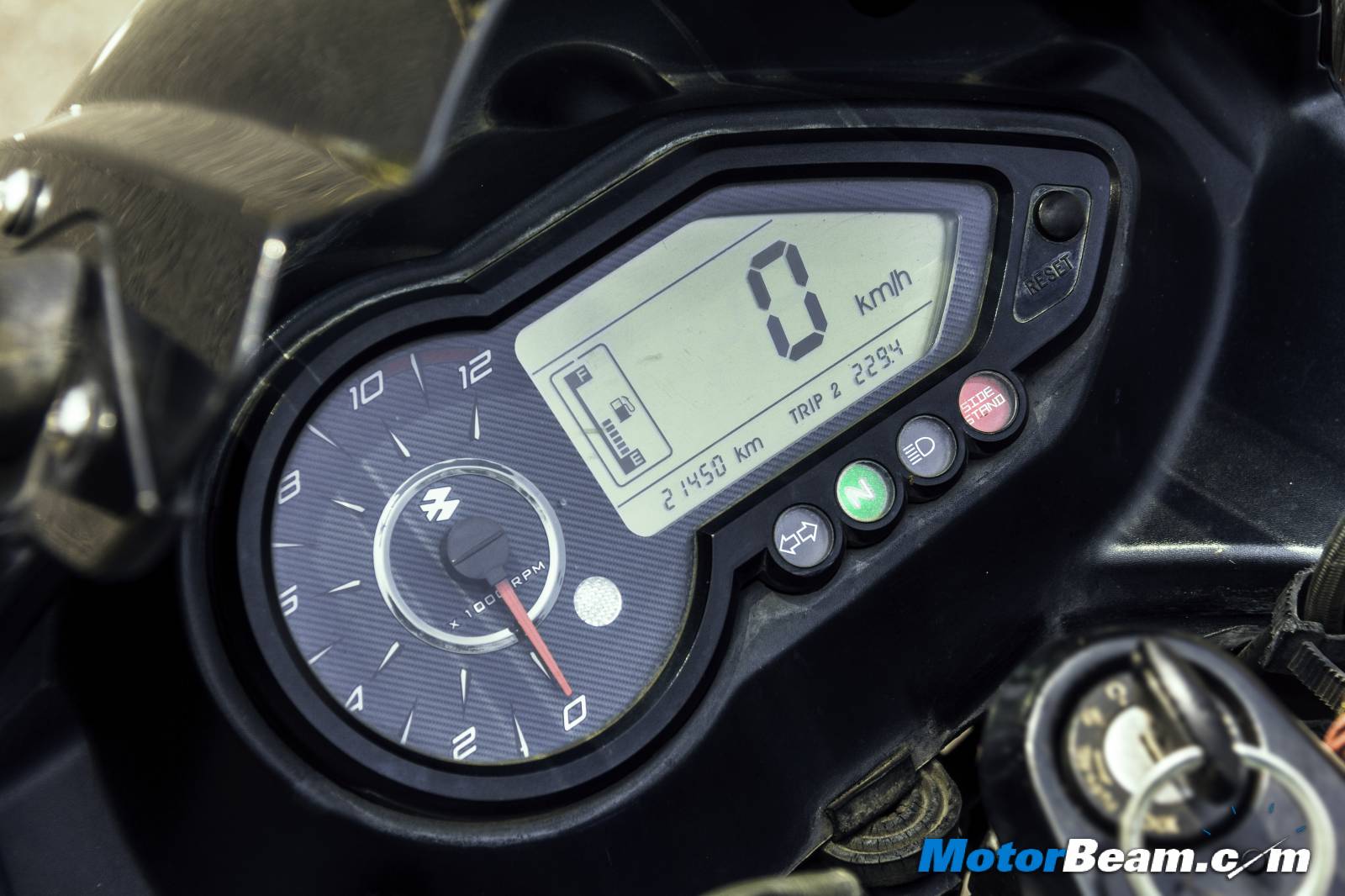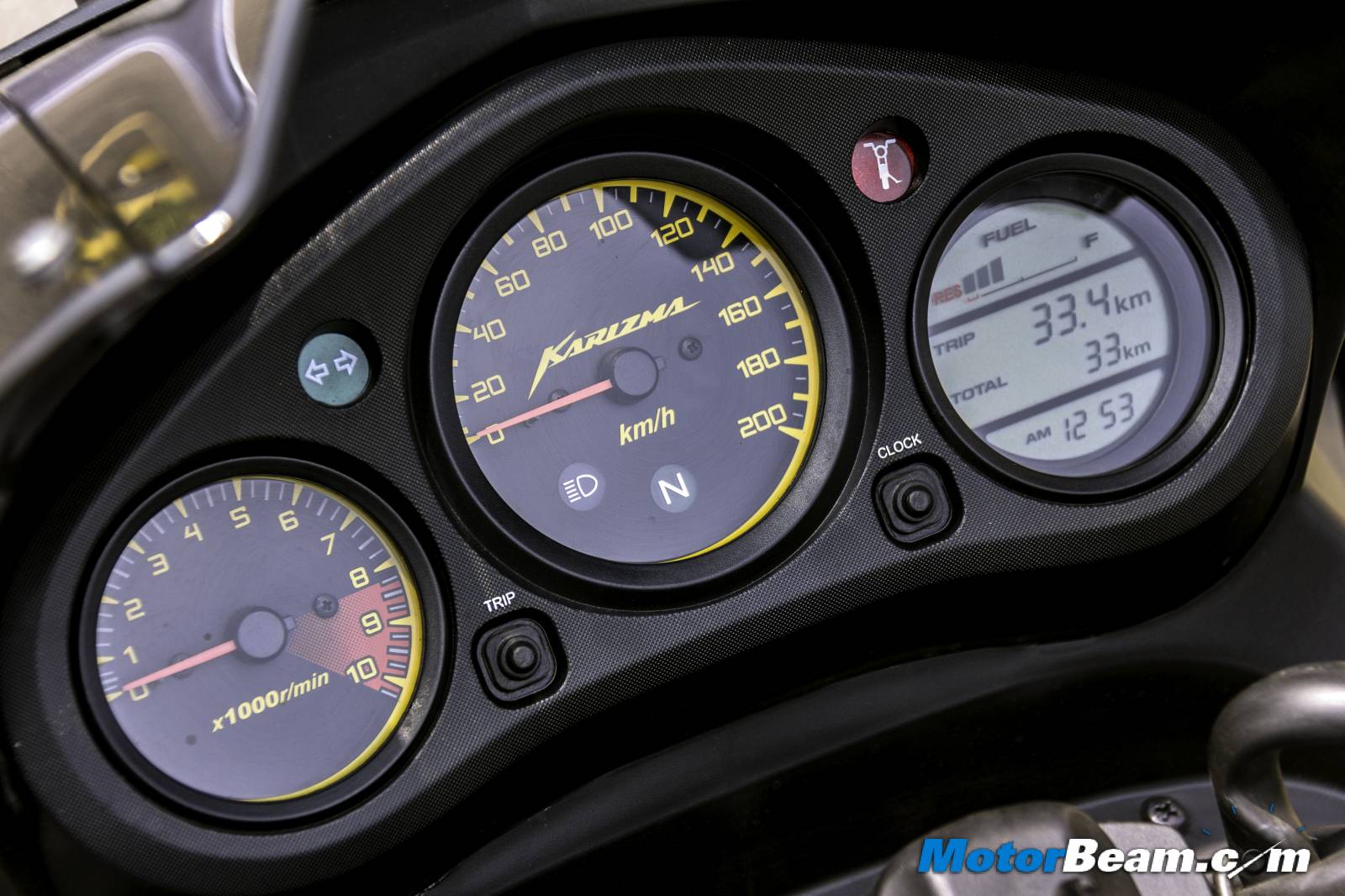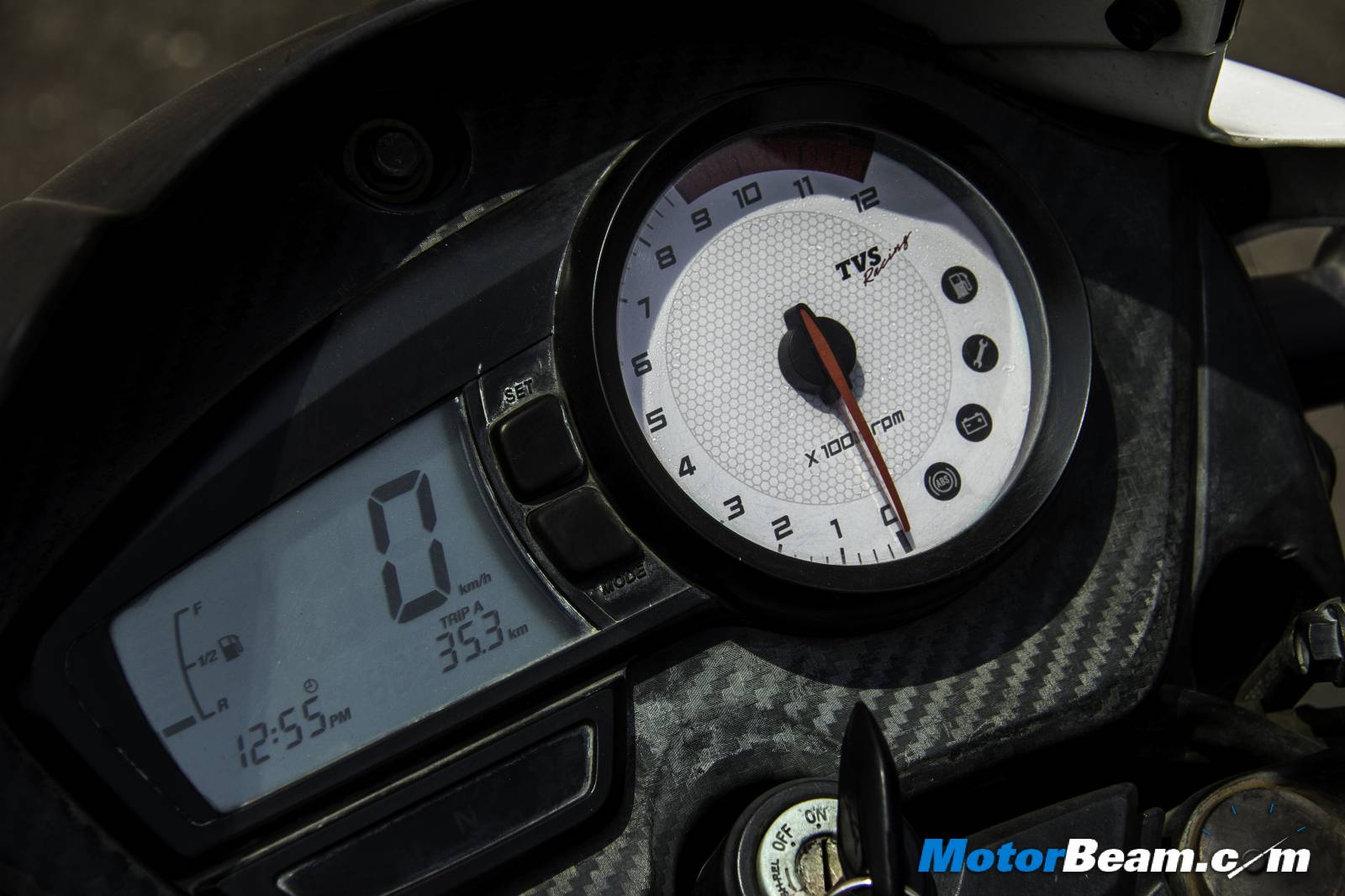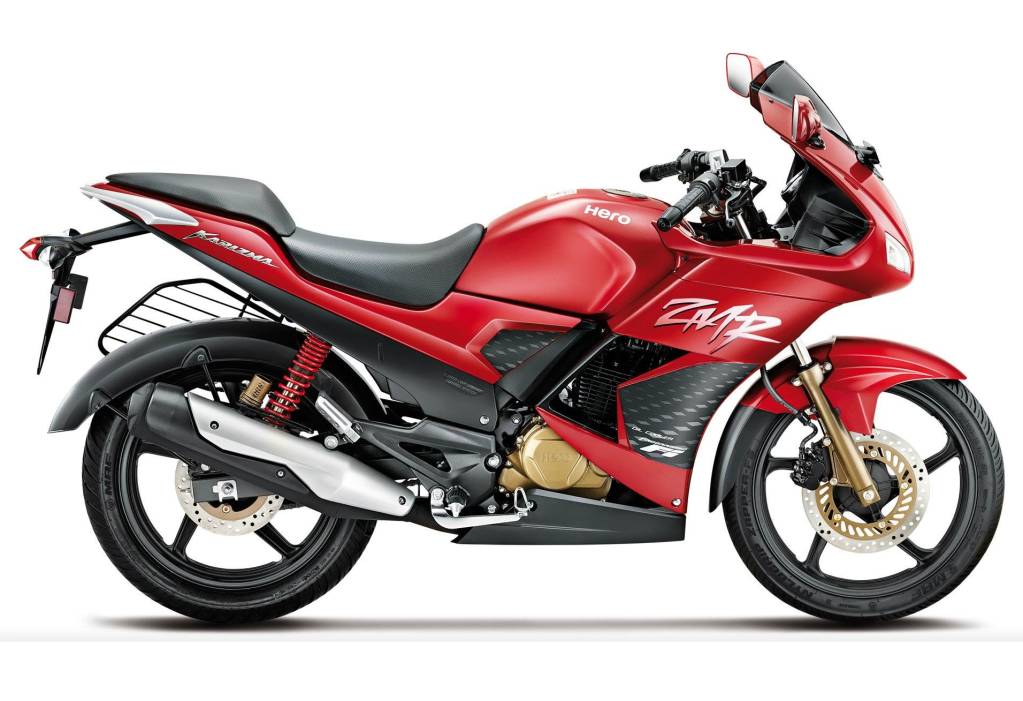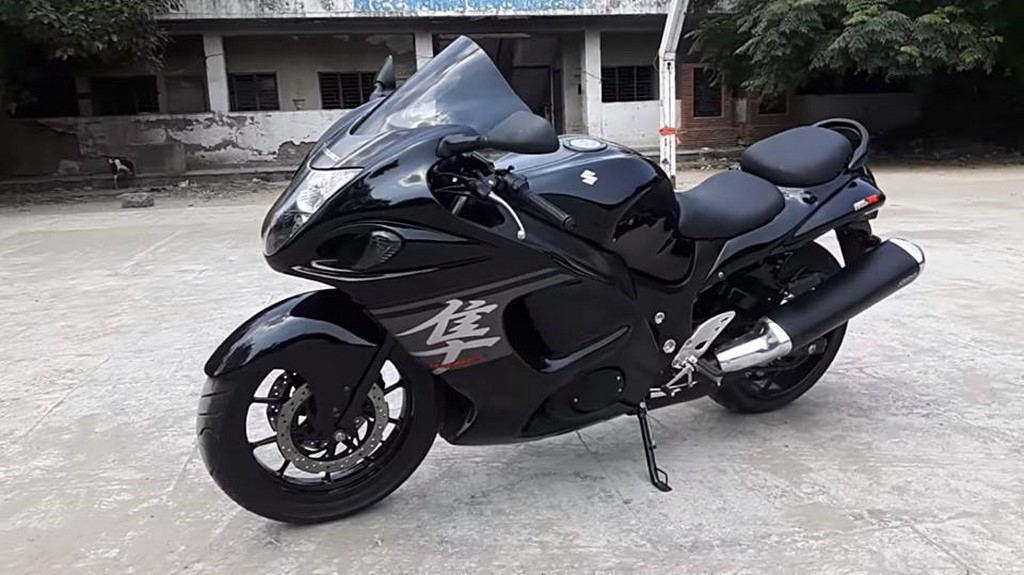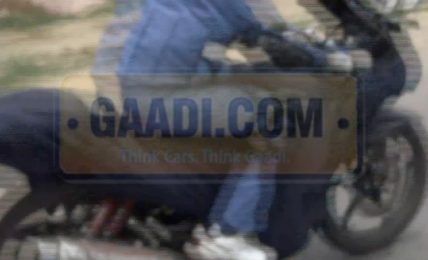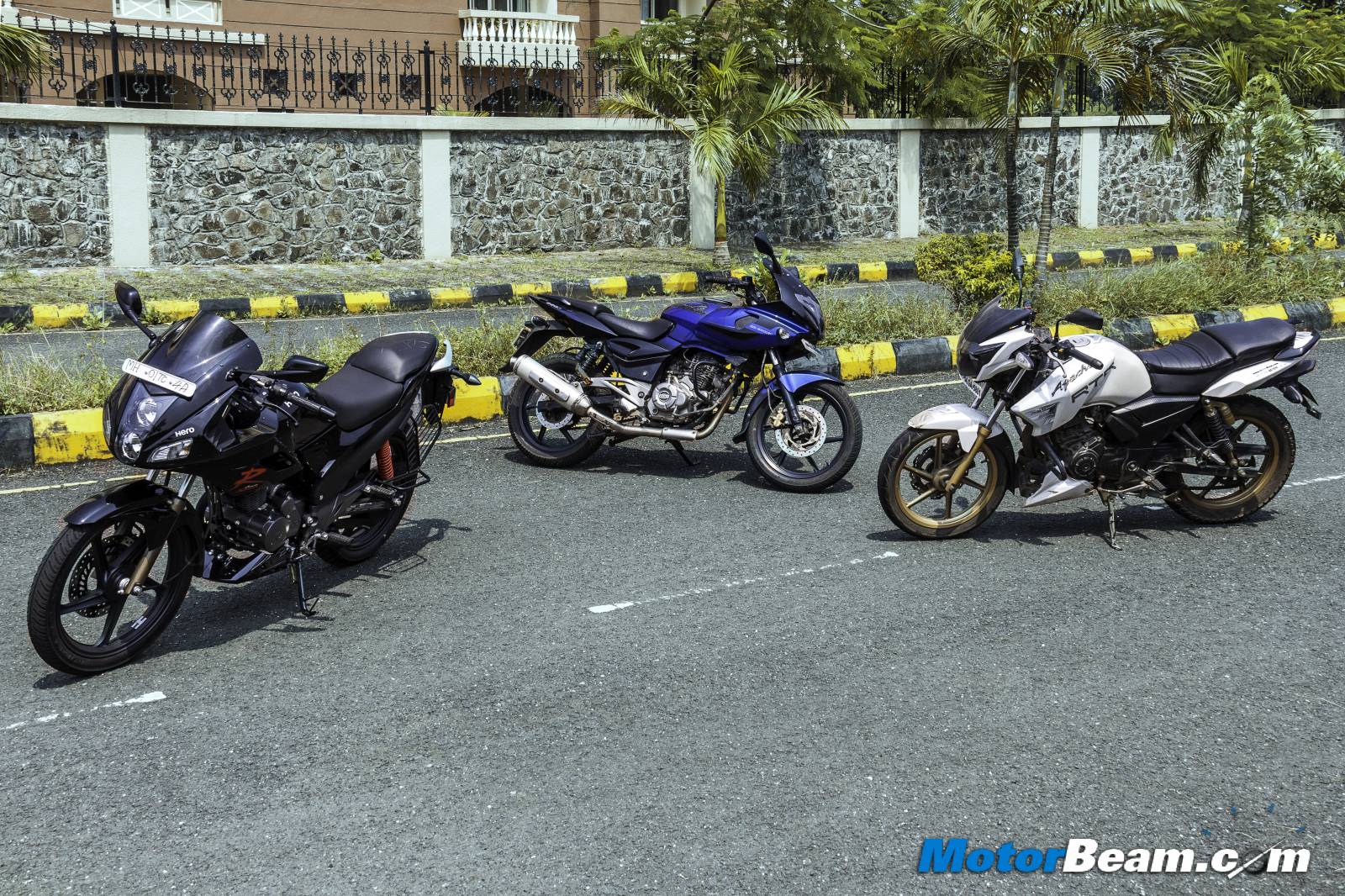
Shootout – Pulsar 220 vs Hero Karizma R vs TVS Apache 180
Price OTR Mumbai: Rs. 96,400/- (Pulsar 220), Rs. 96,720/- (Karizma R), Rs. 95,150/- (Apache 180 ABS)
These entry-level budget sporty bikes may be different but they fall in the same category offering similar levels of performance
We are back again with the most demanding and most sold performance motorcycles in the market today. The Karizma R got refreshed with more power and is back in the battlefield to show who is the boss! However, can it beat the bike which was once the Fastest Indian? We are pitting these two bikes plus a bike which is quite frankly underrated in this battle. Yes, we are talking about the TVS Apache 180. All these motorcycles fall in the same pricing category but end up offering something very different. We will try to help you out and tell you which bike does what at its finest and where the other bikes lack and vice versa. The battle starts all over again and this time we are all prepared! These are the motorcycles which started the performance segment in our country. Are they still valid despite much more competition having come in and much more is yet to come? Let’s find out!
Motor Quest: TVS launched the Apache 180 with ABS in 2011 while Hero updated the Karizma R earlier this year. The oldest bike in this shootout is the Pulsar 220 and Bajaj launched it back in 2009, giving it colour upgrades every now and then.
The Pulsar 220 continues to look macho while the Apache is 100% sporty
Styling – Let’s not shy away from the fact that the Pulsar 220 has aged very well. The multi-colour bikes came and went but the pure black Pulsar 220 still appeals to the heart like no other. Macho, sporty, muscular, powerful are the names given by the riders to it and it pretty much lives up to it too. The well integrated fairing and projector light at night makes it stand out due to the unique pilot lamp and light positioning. The tail is super sharp and signature Pulsar lights still strike a cord and hence they came on the new generation Bajaj Pulsar 200 NS as well. The Hero Karizma R as we know is best less described. A complete overhaul of design has led to some people adore it like crazy or hate it like anything. Front styling is surely not appealing like the Pulsar or sporty as the Apache. However, the mid and rear section is sharp and acceptable as doing many reviews of it has helped us swallow that design in a better way. Let’s not forget the fact that the Karizma also has DRLs which look super cool! The TVS Apache 180 looks short, stubby and the front headlight dome with angel lights is worth a million rupees. The Indian flag decals and purposeful stance of the motorcycle which was recently refreshed is still pure eye candy in sporty colours.
Viewed from this angle, the Karizma does not look bad but its front is disappointing
At the rear, the Karizma gets the same tyre width as the Pulsar 220 despite being bigger in size by one inch, it’s the Pulsar with the right size of a 17-inch wheel which makes the tyre look perfect while giving it a tough look at the rear. Meanwhile the Karizma has a open mudguard which does add to the sporty appeal but hampers practicality in the rain which the Pulsar and Apache offer. The Apache has a detachable mudguard which none of these bikes have. All these bikes offer great spread of light at night with their purposeful lights but the illumination on the Karizma and Apache is low even when NOT compared to the Pulsar 220. All these bikes have LED tail-light in which the Karizma and Apache score best but the Pulsar is slightly weak as it doesn’t have clear lens or prism lens in its tail-light glass. Overall, the Pulsar 220 still looks elegant, the Apache 180 looks sporty and the Karizma R, well you decide.
Instrument Cluster and Switchgear – The Karizma R is the only one here which carries the same yellow meters and has the same digital meter on the right which shows trip, clock, fuel and single trip meter. The Karizma now also has a side stand indicator like the Pulsar which the Apache does not have. The Pulsar 220 and Apache 180 have two trip meters, battery warning and regular tell-tale lights but is devoid of a clock and none of these bikes have solitary turn indicators. The Pulsar has air filter choked, oil pressure and engine temperature warning lights. Meanwhile, the Apache exclusively has service due indicator and 0-60 km/hr timing recorder. All these bikes have an analogue tachometer which is the best part of these consoles. When it comes to switchgear, the Karizma R still does not have an engine kill switch and the switches look insanely dated. The Pulsar and Apache’s switchgear are excellent as always with all the basic features which feel and look good. However, the Apache 180 has better looking and higher quality switches onboard.
All the seats are well made but the Apache is purely for short riders
Ergonomics – All these three motorcycles offer low seat height and the Pulsar 220 and Karizma are the ones which suit almost every type of rider quite well. However, the Apache 180 is improved over the old version but still is best for short to medium riders with its riding position being cramped for taller riders. Riding position on the Karizma is minutely dedicated as handlebars are lower now. The Pulsar 220 was known for mixed riding position but it has changed since late 2012 as ground clearance and seat height dropped by a good 15 mm. Next comes the Apache which offers perfect riding position and overall all three bikes are comfortable enough in their own respective ways. The seats on these three motorcycles are extremely comfortable, well padded which is also because of their generous dimensions in terms of length and breadth for both rider and pillion. Mirrors are well positioned on the Karizma and Apache while the Pulsar is famous for useless rearview mirrors. Foot-pegs are rear-set on all these bikes but it’s the Karizma and Pulsar 220 which allow more space to move around and are spacious enough and the Apache 180 does not offer the same.
All of them get off the line quickly, scoring similar numbers for 0-60 km/hr
Performance – Let’s get over with the numbers done first shall we? The Pulsar 220 takes 11.20 seconds to do the 0-100 km/hr sprint while the Apache 180 does it in 13.2 seconds and the new Karizma R does it in 11.59 seconds, making it much faster than the old model and now it’s neck and neck with the Pulsar. The Pulsar 220 is the fastest bike here with a genuine top speed of 134 km/hr. Meanwhile the Apache manages 125 km/hr and Karizma manages 126 km/hr on the VBOX. The bump in power to the Karizma R has helped it beat the Apache 180 in acceleration but due to short gearing, the Karizma has very less top-end thrust. Even if you wanted to take all that horsepower, the stretch required would be very long.
Every motorcycle here is happy when it comes to cruising in the mid-range
The Karizma R remains the same bike which means it has very good low and mid-end torque but it never had the top-end thrust making it a city slicker and the mid-range king with cruising abilities but it’s not the sportiest of the lot. Blame the gearing for that as the fifth gear is way too tall as it only wakes up post 110 km/hr and finishes its power around 130 km/hr (speedo indicated). The engine is smooth and refined but there are some vibrations that kick in and the gearbox has become notchy for unknown reasons. This is the same case with the Apache 180 also. Vibrations are in abundance but it revs very smoothly and quickly up to its redline while erupting a sporty and throaty soundtrack. But the healthy mid-range and top-end which the engine develops is note worthy and it is because of the pin point precise gearing which the Apache has or let’s say how the gearing should usually be because when it comes to the Pulsar 220’s first gear, it is short making it a little tricky to launch but once you get it right, there is no stopping this machine to get off the line quickly. After first gear, rest of the gears are as precisely done as the Apache and it ends up recording the highest top speed thanks to high-lift camshaft and top-end power biased powerband. It does go above 135 km/hr but it needs a bigger stretch.
The engine on the Apache is the most rewarding to push and hear at the same time, utterly sporty
When it comes to refinement, the Pulsar 220 has gone totally crazy in a good way. The powerband has become very linear and there is no camshaft kicking in post 7000 RPM now. Now the Pulsar clearly redlines and the cutout for it is very smooth too. The engine NVH levels have considerably dropped and the gearbox has become super slick. Bajaj is known for working on bikes continuously and the new bike which we were riding is the best in terms of sportiness, refinement and slick performance without compromise on its character. These changes can be seen on the bikes which were made late in the year 2012. Trust us, the changes are so evident that we are wanting to have one. Mileage figures are similar too. The 220 returns around 35.3 km/l meanwhile the Karizma is also delivering the same which is around 32.2 km/l and the Apache 180 scores the highest with 38 km/l.
The Apache is the most fun of the lot when it comes to riding like an enthusiast
Riding Dynamics – The Pulsar 220 and Apache 180 come with the same type of chassis but the chassis is so brilliantly done on the Apache that it feels in a different league. TVS has stiffened the chassis very well and the bike does not feel wobbly like the Pulsar 220. All these bikes have dual shocks at the rear and despite that, it is the Apache which is miles ahead in the corners than the faster competition (in a straight line). The extra short wheelbase, the lighter kerb weight, the quick and feedback rich turn-in of the Apache just makes it go totally mad when the going gets twisty. Only if the stock tyres were good, it would have got 10/10 instead of 9/10. The Pulsar with its reworked front fork dampers, minute changes in the rear springs with a lowered bike than the original first batch Pulsar has become very easy to live with than before. Bajaj’s constant fiddling with their engine and chassis now results in one of the best sorted out Pulsar you can buy after the 200 NS and you won’t regret it if dynamics is something you are willing to skip on. The raked out nature of the Pulsar makes it feel stable on the highway and while taking sweepers.
Dynamically both Pulsar and Karizma are neck and neck but the Hero bike is easier to ride
The tuning done to the front-end of the Pulsar 220 makes it much more easier to live with and dynamically better too
The Karizma gets no changes to the chassis except a fatter tyre at the rear with those same 18-inch wheels. The Karizma was quite easy to ride and dynamics are always good but it is intimidating to ride unlike the Apache. However, the Karizma R is as flickable in the corners and changing directions is a very easy task. Leaning in the corners is confidence inspiring for all these bikes but the Pulsar 220 rubs its main-stand as soon as you try to get to the limit where you have to back off. All of these bikes can take sweepers at high speeds quite easily. The Pulsar has the rock hard stability of these two bikes but the Karizma tends to feel slightly hairy at high speeds due to the softer suspension setup despite maximum preload dialled at the rear and also because both the Karizma and Apache are rear weight biased motorcycles meanwhile the Pulsar as we know has some of the weight at the front too. The Apache is also good but the crosswinds makes it feels a little unsettled. Ride quality on all these bikes is good and they provide a good amount of comfort on our broken roads. The Apache has the best brakes and backed with ABS, there is no doubt that the safest stopping is offered by TVS here. The 220 also has top notch equipment for more than enough braking power with excellent feel and feedback. However the brakes on the Karizma in terms of feel, do feel wooden but the braking performance is adequate enough despite drum brakes at the rear meanwhile the Pulsar and Apache come with standard disc brakes.
Despite being quite old, the Pulsar 220 and Apache 180 continue to impress riders
Verdict – If you are willing to buy a bike on the basis of higher performance as we know from the numbers, the Pulsar 220 is the fastest and the quickest motorcycle of the lot. It is now extremely refined and living with the bike on a daily basis is an easier task, making it even better than before. The Karizma R now comes almost neck and neck when it comes to performance competition with the Pulsar 220 and now it is not dramatically behind like its predecessor. Both these bikes come at the same price tag but as we know, the Pulsar offers more value meanwhile the Karizma R can only give you reliability and the tag of a sports cruiser. The Pulsar 220 is now capable of almost giving you all that too. Coming to the Apache 180, it is the most to fun to ride package and ABS being a big boon makes its case stronger but in terms of street performance, it does lack but it also offers value like the Pulsar. However, as an overall package, the Pulsar 220 in this particular shootout is hard to beat and is the winner of this test but not by a huge margin.
The Hero Karizma R serves the fast touring purpose very well while the TVS Apache 180 offers the best street riding experience. However, the Bajaj Pulsar 220 wins because it has qualities of both the aforementioned bikes while providing value even after five years of its launch.
Further Reading –
2014 Hero Karizma R Review
TVS Apache 180 Review
Picture Editing – Sri Manikanta Achanta


